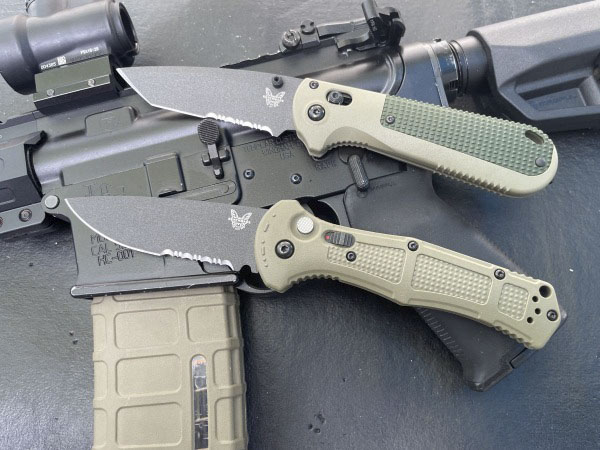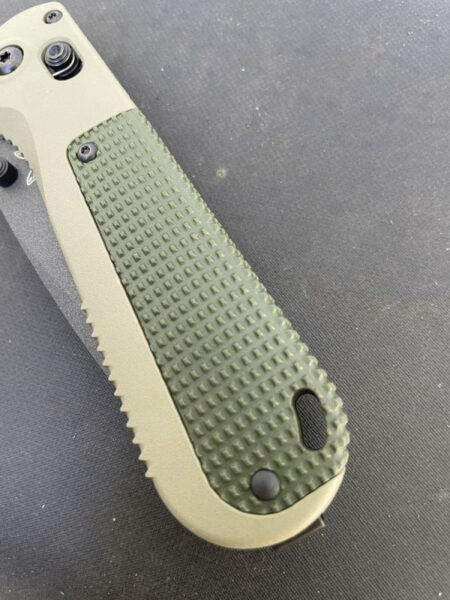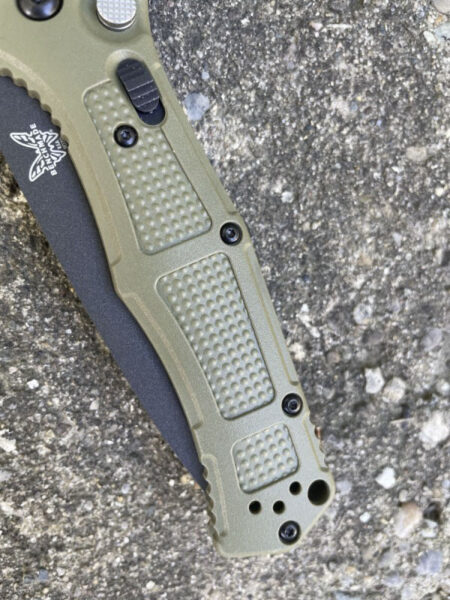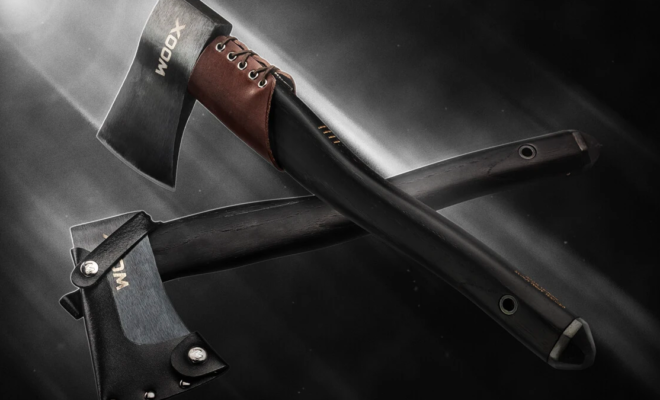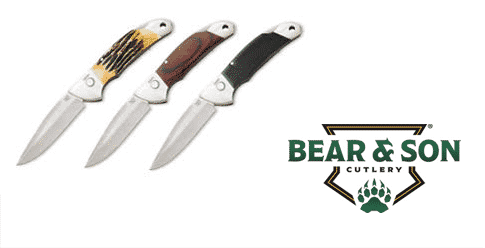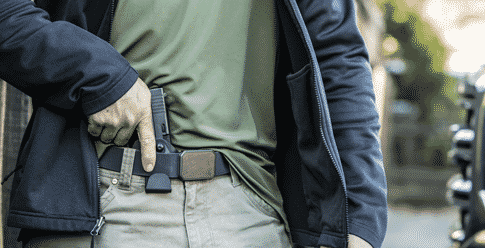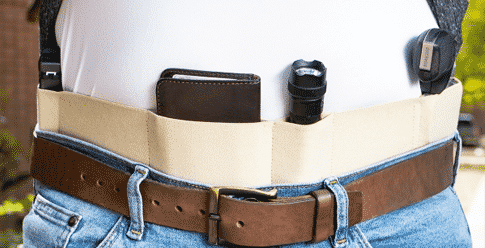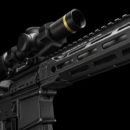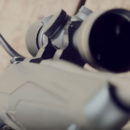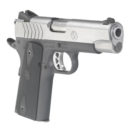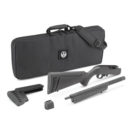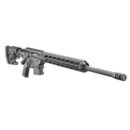Benchmade’s Dynamic Duo
Benchmade’s Dynamic Duo
By Dave Spaulding
Correspondent for the Tactical Wire
Folding knives clipped to trouser pockets has become ubiquitous in our society. While some locales restrict the knives that can be carried and how they are carried, in most regions of our country, a knife clipped to a pocket is fine and causes very little concern. I have carried a pocket knife as far back as junior high school and no one cared. Times have changed unfortunately.
There are many models of knives and they are carried for a wide variety of reasons. The intended purpose of the knife should be a big factor in which model you choose. If you are just opening letters or other minor chores, a gas station folder will probably suffice. However, if your life or the lives of others may depend on how durable your blade is, you might want to choose carefully and not skimp on quality. Benchmade enjoys a solid reputation as one of those “go to” knives for all practical and tactical purposes, whether it be military, law enforcement, outdoor recreation or EDC. Their extensive line of fixed blades and folders covers just about every possible need from low profile “legal everywhere” knives to large outfitter knives that would be at home in the Alaskan wilderness.
The tactical folder is generally thought to be a robust knife with a blade in the 3-to-4-inch region. Many feel 3.5 inches is the perfect length for such a blade, being long enough to reach vital areas of the body but short enough to be easily carried. While blade configuration continues to be a hotly debated topic, Benchmade offers most every popular style which includes a partially serrated model, something I think is quite valuable. Benchmade sent me two of their most popular folders for evaluation, both with partially serrated blades – one with the popular Tanto style, the other with a more conventional drop point blade.
The Claymore is a new design. This auto opener has a green Ranger “Grivory” grip and is quite slender with easy-to-use push button controls. Incorporating a new steel for Benchmade’s wide selection of premium materials, the Claymore blade has been built from CPM-D2 to provide considerable toughness and edge retention. Manufactured in the USA, the Claymore has set a very high standard for closed break strength, making this Benchmade’s toughest auto opening folder to date. Its open length is 8.6” with a blade length of 3.6”. The blade thickness is 0.114 inches, closed length of 5 inches and a handle thickness of .6 inch.

The REDOUBT is what Benchmade calls their “go it alone knife”. According to the company, “If there is ever a time when you must go alone, the brand-new 430BK Redoubt® will keep you confident and capable.” The REDOUBT is a solid EDC manual opener with the proven Axis lock system which will work for both utility and self-defense with “Grivory” handles and a drop-point CPM-D2 blade, making this a reliable addition to your preparedness kit. Available in both open a Tanto and Drop Point blade configuration, the overall length is 8.29 inches with a blade length 3.55 inches. The blade thickness is 0.124 inches, closed length is 4.75 inches and a handle thickness of 0.65 inches.
Both knives make use of a low profile, black pocket clip that seats the folded knife deep in the pocket. Much has been made of late about the tell-tale clip in the pocket and whether or not it can be trouble for the wearer. I will steer clear of this debate as I can see both sides, but it does make sense to me to keep the knife as low profile as possible.
Both knives offer a stippled pattern on the grip that enhances a solid hold even if the knife and hands were to become wet. In addition, both knives came with a partially serrated blade, a feature that I prefer. A serrated blade is something that has been hotly debated in the past, but an incident in my law enforcement past settled that in my mind a long time ago. In this case, it was another accident and another seat belt. I was carrying a knife at this time, a Masters of Defense James Keating Hornet with a partially serrated blade.
The vehicle had left the road and gone into a pond. The top of the passenger compartment was above water but the driver was covered to his upper chest. As I went to cut the wet seat belt, I noticed that my blade just pushed the belt back and forth as I tried to cut. It was the serrated edge that allowed me to saw through the wet nylon and free the driver. Say what you want about partially serrated blades, but my mind is made up.
My testing began with a simple deployment exercise – how easily could I pull the knife from my pocket and open the blade. The REDOUBT proved to be quite easy, but only because I have spent many hours working to deploy a manual folder without conscious thought. Years back, I adopted Kelly McCann’s method of “shooting a marble” to open a manual folder and it has never let me down. The Claymore, being an auto opener, took me a little more effort. It has a dual button system that both opens and locks the blade in place. The thumb has to pull back on the lock button before pushing in on the release. It can be done, but I would suggest if you adopt this knife, I would carry it exclusively. If you do, you will be able to deploy it with ease.
The next test was to see if the locking mechanism was strong enough for daily use. I tested this by opening the knives and banging the back of the blade against a hard surface. You would be surprised how many quality knives fail this test. The locking mechanism either breaks or the blade “bounces off” the locking mechanism.
How sharp are the two Benchmade folders? I used two tests to explore this question. The first is merely hanging a piece of nylon cord from the ceiling and snap cutting the loose end to see if the blade will cut through. This test does not result in very interesting photos. Both the REDOUBT and the Claymore cut through the cord easily. What most readers of THE TACTICAL WIRE want to know is how well the two blades will cut tissue. I created a “meat arm” from a wood dowel, a large chuck roast, cling wrap and a cotton t-shirt. The dowel acts as a bone underneath the chuck roast which is then wrapped to simulate skin. The cotton t-shirt is then double wrapped around the tissue to simulate typical clothing.
A quick snap cut is then applied to the meat arm to see how easily the “arm” is cut and how much effort it will take. It took very little effort with either knife. A very light cut went right through the cotton, cling wrap and meat right down to the wood dowel. As a matter of fact, both knives bottomed out on the wood dowel. In this test, Benchmade lived up to its reputation of making some of the sharpest and strongest tactical-grade knives currently available.
Benchmade should be on your list of “go to” knives, whether for field use, tactical operations or everyday carry. Think about why you are carrying your knife and choose wisely.

